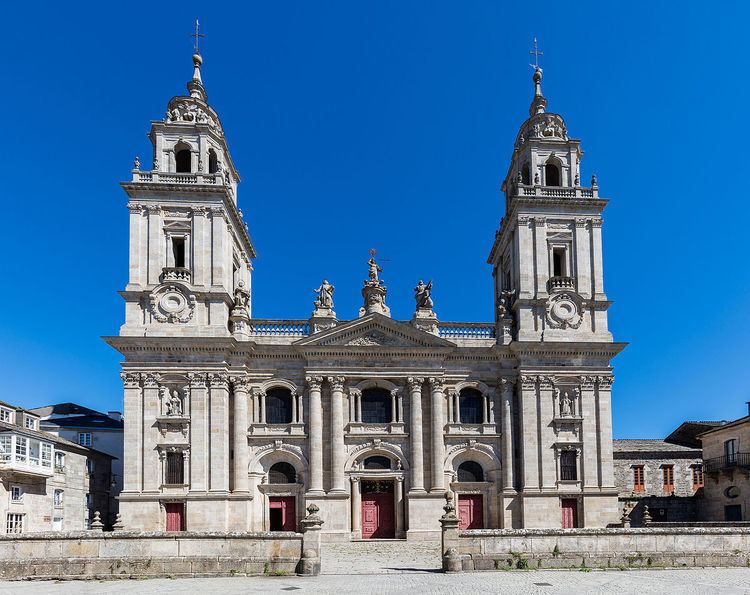Criteria Monument Spire 2 | Affiliation Roman Catholic Designated 3 June 1931 Phone +34 982 23 10 38 Groundbreaking 1129 | |
 | ||
Reference no. (R.I.) - 51 - 0000708 - 00000 Address Praza Santa María, 1, 27001 Lugo, Spain Architectural styles Similar Roman walls of Lugo, Museo Provincial de Lugo, Museo Arqueolóxico do Castro, Ourense Cathedral, Paseo do Rato | ||
Saint Mary's Cathedral (Galician: Catedral de Santa María), better known as Lugo Cathedral, is a Roman Catholic cathedral and basilica in Lugo, Galicia, north-western Spain. The church was erected in the early 12th century in a Romanesque style, with Gothic, Baroque and Neoclassicist elements.
Contents
History
A first church existed in the site from 755, but in the early 12th century its conditions were such that Bishop Peter III, in 1129, commissioned the local master Raimundo a new edifice in the current architectonical style. This Romanesque structure was completed in 1273.
Later renovations and restorations added elements in other styles, such as the Renaissance retablo at the high altar, destroyed in the 1755 Lisbon earthquake, and of which today fragments are housed in the church.
The cathedral received from the Pope the privilege to permanently expose the Holy Sacrament.
Structure
The cathedral is on the Latin cross plan, with a length of 85 m. It has a nave, covered by a barrel vault, and two aisles, with an ambulatory and five apse chapels. The triforium features triple ogival mullioned windows. The apse houses a calvary sculpture from an unknown date.
The façade is a Renaissance design by Julián Sánchez Bort, inspired to that proposed by Ventura Rodríguez for the Cathedral of Pamplona. Its construction was finished in the late 19th century, with the completion of the two side towers.
The northern entrance's narthex is in Gothic style, dating to 1510-1530. Internally showing a starred vault, it is formed by three archivolts with a lintel showing Christ Pantocrator and with a pinjante (glove-shaped decorative pendant), the latter featuring a depiction of the last supper of Christ.
Right to the entrance is the Gothic Torre Vella (bell tower), surmounted by a Renaissance top floor finished by Gaspar de Arce in 1580. The sacristy (1678) and the cloister (1714) are in Baroque style, as well as the central chapel of the triforium (1726). The chapel of St. Froilán is in Renaissance style, dating to the 17th century. Notable is the choir, built by Francisco de Moure (early 17th century)
